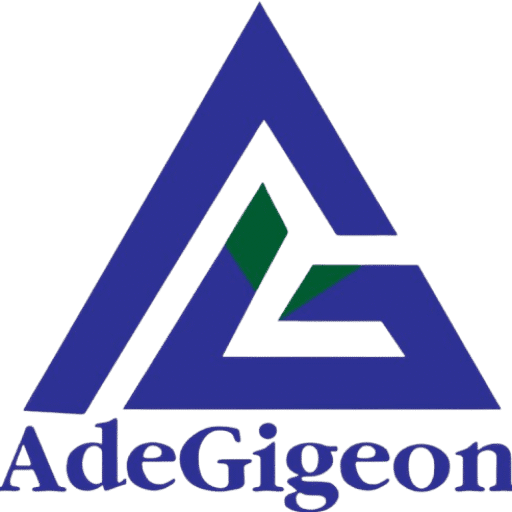Turning Scrolls into Sales for Your Brand
Ever wondered how some brands seem to pop up everywhere you scroll — from Instagram Reels to your Facebook feed Ever wondered how some brands seem to pop up everywhere you scroll — from Instagram Reels to your Facebook feed — and somehow convince you to click ‘Shop Now’? That’s no accident. It’s the power of Meta Ads — and here’s how Meta Ads work their magic.
For many e-Commerce and education brands, the challenge isn’t visibility — it’s conversion. You might already have followers liking your content, visiting your website, or saving your posts, but sales and sign-ups? Not consistent enough. That’s where understanding how Meta ads work can help you turn social attention into predictable growth.
In this article, we’ll break down Meta Ads in plain language — how they actually work, why they matter for eCommerce and education providers, and how to use them alongside SEO and Google Ads to create a full-funnel growth system.
What Exactly Are Meta Ads?

Think of Meta Ads as your ticket to targeted visibility on Facebook, Instagram, and Messenger. Instead of hoping your post goes viral, Meta lets you reach people based on who they are, what they love, and how they behave online.
Here’s how it works in simple terms:
- You choose your goal.
- Want more traffic to your website?
- Want people to message you on WhatsApp?
- Want to boost online sales or event registrations?
Meta optimizes delivery for that exact result.
- You define your audience.
- You can target by interests (e.g., fashion lovers, parents, or learners), location, behavior, or even upload your customer list.
- The platform’s AI learns from your data to find more people like your best customers.
- You run creative ads.
- Eye-catching visuals, carousel showcases, or Reels that tell your story.
- These appear where your audience already spends time — inside their feed, stories, or video content.
- You measure performance.
- With Meta Pixel or Conversion API, you can track what happens after people click — from website visits to completed purchases or form submissions.
It’s that combination of data + creativity that makes Meta Ads a powerhouse for modern businesses.
Why Meta Ads Work So Well for E-Commerce and Fashion Brands

E-commerce and fashion thrive on visuals and emotional connection — both of which Meta Ads deliver beautifully.
Imagine this:
You’re a boutique owner or designer with stunning product photos. You boost a post, and it gets likes but few sales. With Meta Ads, instead of random engagement, you can target buyers — people who’ve viewed your products, added items to their cart, or even interacted with your competitors’ pages.
Here’s why it works:
- Visual storytelling at scale: Instagram Reels, carousel ads, and dynamic product ads let you showcase new arrivals, sales, or testimonials in a scroll-stopping way.
- Advanced retargeting: Reconnect with people who visited your site but didn’t purchase — maybe with a discount or lookbook ad.
- Lookalike audiences: Meta uses your existing customer data to find new people similar to your best buyers.
- Lower cost per click (CPC): Especially for awareness campaigns, Meta Ads can be more affordable than Google Ads.
🪄 Quick tip: Pair your Meta ads with a strong SEO foundation. While Meta drives fast discovery, SEO builds long-term visibility when people Google your brand later.
How Meta Ads Help Education Providers Build Trust and Enrollments

For schools, course creators, and training agencies, Meta Ads aren’t just about visibility — they’re about credibility and connection.
Parents and learners don’t usually enroll after one ad. They need to trust your institution. Meta helps you nurture that journey step by step.
Here’s how it works for education providers:
- Awareness campaigns: Introduce your school or course through video tours, testimonials, or success stories.
- Lead generation forms: Collect enquiries directly inside Facebook or Instagram without forcing users to leave the app.
- Retargeting: Follow up with people who visited your admission page but didn’t fill the form.
- Local targeting: Reach parents searching for schools in specific areas (e.g., “private schools in Lekki” or “vocational training in Nairobi”).
Meta’s power lies in its ability to tell your story repeatedly — until trust turns into an enrollment.
🧩 Pro insight: Combine Meta Ads with Google Ads for maximum impact. While Google captures active intent (“best school near me”), Meta builds emotional connection first.
The Perfect Trio: SEO, Google Ads, and Meta Ads Working Together

Each marketing channel has a distinct strength. When combined, they cover the full buyer journey — from discovery to conversion to loyalty.
| Goal | SEO | Google Ads | Meta Ads |
|---|---|---|---|
| Visibility | Ranks your site for relevant searches | Puts you on top instantly | Shows your brand in social feeds |
| Traffic Source | Organic search (Google) | Search intent (active buyers) | Social discovery (interested audiences) |
| Best For | Long-term growth | Short-term sales boost | Awareness + retargeting |
| Cost | Time investment | Pay per click | Pay per impression |
| Trust Factor | High (organic) | Moderate | Depends on engagement and visuals |
In short:
- Use SEO to get found naturally.
- Use Google Ads to capture people ready to buy or enroll.
- Use Meta Ads to build awareness, retarget, and nurture loyalty.
Together, they form a holistic digital growth system — especially effective for fashion brands and educational institutions.
Common Pain Points Meta Ads Solve

If you’ve ever faced any of these issues, Meta Ads might be your best fix:
- Getting likes but no sales: Optimize your campaign for conversions, not engagement.
- Cart abandonment: Retarget visitors who added items but didn’t complete checkout.
- Low enrollment leads: Use precise targeting with lead generation forms.
- Poor website conversions: Combine Meta Ads with landing page optimization and SEO tweaks.
Meta Ads don’t just advertise — they educate the algorithm about your ideal audience. With time, your campaigns get smarter and more profitable.
Practical Tips for Running Effective Meta Ads

Here are a few easy-to-implement tips whether you’re promoting fashion items or online courses:
- Start with a clear goal – Awareness, traffic, leads, or sales.
- Use high-quality creatives – Professional images or short videos.
- Install the Meta Pixel – It’s crucial for tracking conversions.
- Test multiple audiences – Interests, lookalikes, or retargeting segments.
- Optimize your landing pages – Fast, mobile-friendly, and persuasive.
- Check reports weekly – Focus on cost per result, ROAS, and conversion rates.
💡 Pro tip: Even a small daily budget can perform well when combined with strong visuals and data-backed targeting.
My Proven Approach to Running Meta Ads That Actually Convert

Over time, I’ve learned that Meta Ads aren’t a “set it and forget it” type of system. What works for one brand might completely flop for another — even within the same industry. That’s why my first step is always market research.
Before launching any campaign, I study:
- How competitors are positioning their products.
- What type of content (videos, carousels, reels) gets the most engagement.
- The tone, visuals, and offers that resonate best with their audience.
This helps me identify what’s already working in the market — and where we can stand out.
Test Creatives Like a Scientist
Once research is done, I prepare multiple ad creatives. Think of it as giving Meta’s algorithm a buffet to choose from.
The goal is to let data, not assumptions, decide what works best.
That’s why I love using Dynamic Creative — Meta automatically tests your different headlines, visuals, and CTAs, then prioritizes the best-performing combinations. For more control, I also run A/B tests (split testing) to directly compare specific variables like audience types or ad copy.
Avoid Campaign Cannibalism
Another mistake many advertisers make? Running multiple campaigns with the same goal or audience at the same time.
When that happens, your own ads start competing against each other for attention — and you end up driving up your cost per result.
To prevent this, I always structure campaigns carefully so each has a unique intent — whether it’s awareness, conversion, or retargeting. That way, every campaign plays its part in the funnel without stepping on the other’s toes.
Conclusion: Turning Ads into Action
Understanding how Meta ads work isn’t just about running promotions — it’s about building relationships that drive real results. Whether you’re a fashion brand trying to turn likes into repeat buyers or a school aiming to fill your next cohort, Meta’s ad system offers the precision and creativity to make it happen.
When combined with SEO for long-term visibility and Google Ads for high-intent traffic, you get a full-funnel approach that keeps your brand visible, trusted, and profitable.
If you’re curious to see how these strategies fit your brand, explore more of our digital marketing insights — or reach out to learn how tailored Meta ad strategies can accelerate your growth.
want us to help with the heavy lifting?kindly contact us

Samuel Adebusuyi
Hi, I’m Samuel! I’m an SEO specialist and copywriter with 3 years’ experience turning clicks into customers. I love crafting content that ranks and resonates, helping brands grow their online presence one post at a time.
frequently asked questions
1: Are Meta Ads and Facebook Ads the same thing?
Yes — they are. Meta Ads simply means ads across all of Meta’s platforms: Facebook, Instagram, Messenger, and Audience Network.
So when you say “Facebook Ads,” you’re technically referring to a part of Meta Ads. The term Meta Ads just reflects the company’s rebrand and broader ecosystem.
2: How much should I spend on Meta Ads to see results?
There’s no fixed number — your budget depends on your goals and audience size.
However, for small businesses or startups, starting with $3–$10 daily can deliver solid learning data. What matters most isn’t the amount, but how well your ads are structured — targeting, creatives, and optimization make a bigger difference than budget alone.
3: What kind of businesses benefit most from Meta Ads?
Almost every business can benefit, but visual and trust-based industries (like fashion, beauty, and education) see especially strong results.
Why? Because Meta’s platforms are built around storytelling and emotion — perfect for showcasing products, testimonials, or success stories that move people from “just scrolling” to “I need this.”

